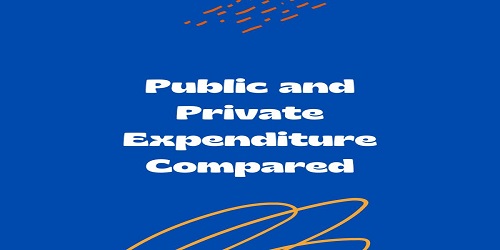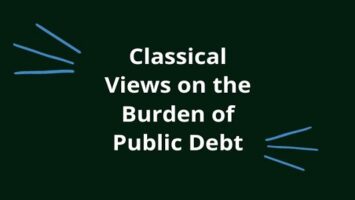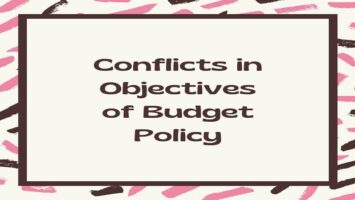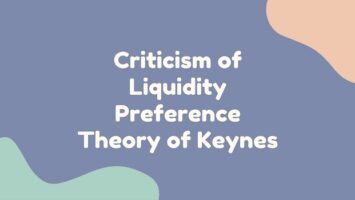Public and Private Expenditure Compared:
Similarities:
With regard to similarities between public and private expenditure, it is said that neither private individuals nor public authorities would like just to waste the expenditure without any corresponding returns. It means each will try to achieve the maximum possible returns with the minimum possible expenditure. Any shortfall on this front will be on account of inefficiency, uncertainty, lack of foresight, and similar other causes. Another point of similarity between the two is that in both private and public expenditures, there is an element of flexibility, though it is generally more in the case of public expenditure. In each case, there can be more than one way of raising additional income. However, public authorities can raise the additional income more conveniently than private individuals. The public authorities can raise their income through additional taxation or borrowing or from non-tax revenue and force the public to act according to their decisions. It means the public authorities have the power to raise revenue to meet their needs, which an individual does not process, except that he can make slight improvements in his income through his hard work and borrowing, and that too, depends upon various circumstances. In the case of the private individual, however, there is a minimum expenditure below which he cannot go and increased expenditure is essential for the increased productivity of the worker, and therefore, increased income, the same is true in the case of public authorities.
Dissimilarities:
However, there are differences between public and private expenditures. It is sometimes said that private expenditure is determined by his income, while public expenditure determines the amount of income necessary to meet that expenditure. To put it in the words of Hicks, “Private finance, whether of firms or individuals, start with a given income plan as the framework within which expenditure must be planned; public finance on the contrary starts with a given expenditure plan, and the authorities adjust their incomes (revenue) by means of taxes and resources, to match the expenditure.” It means the income of public authorities is more elastic than that of private individuals.
Another characteristic feature is its compulsory character. For nearly a century, it has been well-known that a State has a claim on all the property and services of its subject for whatever purposes it chooses. However, a government is careful not to over-tax, but to tax in such a way that taxation is equitable and well-distributed. Thus, there is a limit to public authorities, but this does not affect the compulsory nature of public expenditure, distinguishing features as compared with private expenditure.
Besides, Prof. Shirras pointed out that public expenditure differs from private expenditure in that the former should balance income and should not necessarily seek a profit in the manner that an individual would. Keeping in view the fact that the state is the guardian of the social welfare and the economic and social health of society. Public expenditure may not be incurred on the basis of the profit motive. Thus, few items of public expenditure are not related to the cost of providing services.
These services can be in the nature of social security and some of them are meant to be of long-run benefit to society. An individual has a limited horizon and will plan the future only within the foreseeable future. The State may take a very long view.
Again, the individual usually spends on what he considers to be to his advantage. In the case of the State, this may not be true. Thus, the State incurs expenditure on defense and higher education without having any consideration for its advantage.
Besides, ordinarily, net advantage governs the expenditure of the citizen who takes up occupation. The State on the other hand is unable to take this view as the basis of its expenditure such as, on law and order, on social objects such as education, poor relief, public health, etc. is undertaken without having any consideration or net advantage.
These days most States are finding the philosophy of functional finance a better approach than the traditional approach of prudish budgeting according to which deficits or surpluses could only be temporary. The objectives of public expenditure are now far wider than imagined earlier.









Comments (No)